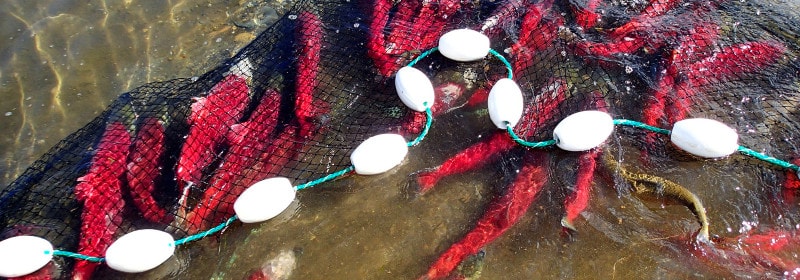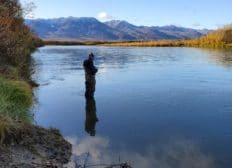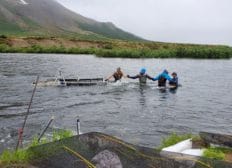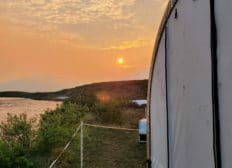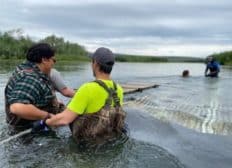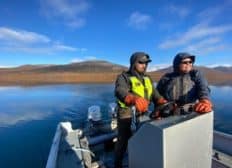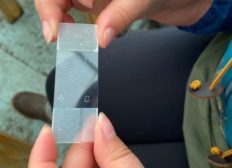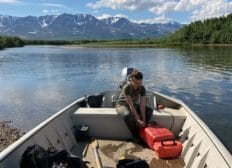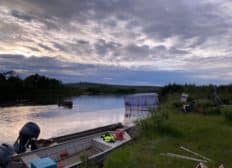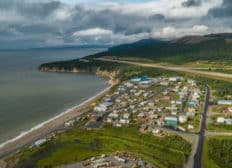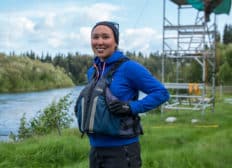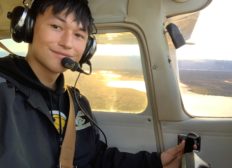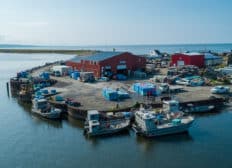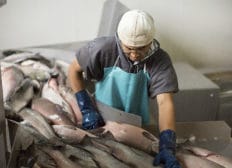Salmon Lake Limnology
Salmon Lake, which empties into the Pilgrim River in the Port Clarence District, is the birthplace and rearing location of one of the northernmost wild sockeye salmon populations in North America. Unlike other salmon species, sockeye spend one to three years in a lake habitat during the juvenile phase of their lifecycle. Salmon Lake, and the important role it plays in determining the quantity of sockeye salmon that return to the Pilgrim River annually, has been studied for decades.
 Limnological studies of Salmon Lake focus on measuring levels of nutrients, phytoplankton, and zooplankton by analyzing water samples from specific locations. The first limnological studies of the lake were conducted in 1994 as part of an experimental fertilization program attempting to increase adult salmon returns. From 1997 to 2006, sporadic fertilization occurred through various organizations. In 2007, NSEDC took over the fertilization project, and continues to conduct lake fertilization every summer. Limnological studies, which assess the effect of fertilization and determine the amount necessary each year to create optimal rearing conditions for the sockeye fry, are also ongoing.
Limnological studies of Salmon Lake focus on measuring levels of nutrients, phytoplankton, and zooplankton by analyzing water samples from specific locations. The first limnological studies of the lake were conducted in 1994 as part of an experimental fertilization program attempting to increase adult salmon returns. From 1997 to 2006, sporadic fertilization occurred through various organizations. In 2007, NSEDC took over the fertilization project, and continues to conduct lake fertilization every summer. Limnological studies, which assess the effect of fertilization and determine the amount necessary each year to create optimal rearing conditions for the sockeye fry, are also ongoing.
In 2020, NSEDC entered into a consulting contract with the ADF&G Limnology Lab, and together we are working on a thorough interpretation of the data that has been being collected since the 1990s. With the lab’s help, NSEDC has been able to confidently assess the amount of fertilizer being added each year based on past years’ nutrient levels and the number of fish that returned.
 Salmon Lake Fertilization
Salmon Lake Fertilization
The Salmon Lake fertilization project aims to increase the growth of phytoplankton, which rely on nitrogen and phosphorous. Zooplankton feed on phytoplankton, and in turn, juvenile sockeye salmon feed on zooplankton. NSFR&D adds a liquid nitrogen and phosphorous fertilizer to the lake during the summer growing season to sustain an adequate population of phytoplankton and zooplankton. We promote larger, healthier sockeye smolts leaving the lake by providing more, higher quality food. It is NSFR&D’s aim to provide for stable sockeye salmon runs that meet the area’s subsistence and escapement needs every year.
Pilgrim River and Salmon Lake Smolt
A smolt is juvenile salmon that is preparing to migrate from freshwater into the ocean. A larger smolt has a better chance of survival in the ocean than a smaller smolt because it will be better at competing for food and avoiding predators. NSFR&D studies the health condition of sockeye smolts by sampling for age, weight, and length as they leave the lake. Age is determined by examining smolt scales under a microscope in the lab, and weight and length are determined in the field. These data are used to gauge the effectiveness of the fertilization applied in previous summers.
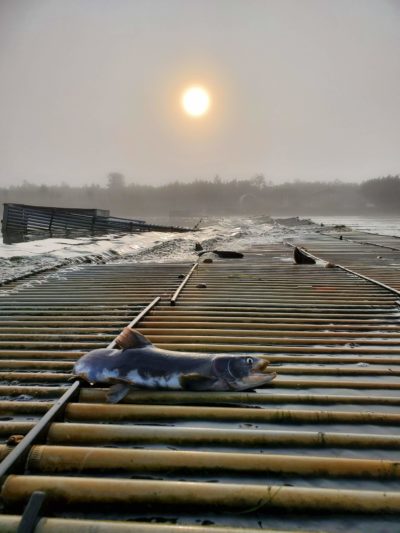 Pilgrim River Weir
Pilgrim River Weir
The most effective way to assess the Salmon Lake fertilization project is to observe annual adult sockeye salmon returns on the Pilgrim River. NSFR&D operates a weir that employs local fisheries technicians to count the returning sockeye salmon. Weir counts not only determine the effectiveness of the fertilization program, but also help inform ADF&G’s subsistence fishery management.
An example of a recent collaborative research project conducted on Salmon Lake sockeye can be found here.
